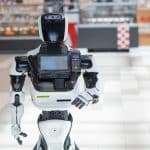In an era marked by significant technological advancements, the ways we approach personal safety have been revolutionized. In the past, individuals often relied on physical tools and the help of others for protection. Today, technology has provided us with a vast array of devices designed to enhance our personal safety. In this article, we will explore how technology is enhancing personal safety devices, equipping you with a better understanding of how you can use these innovations to your advantage.
The Evolution of Personal Safety Devices
To appreciate how technology is enhancing personal safety devices, it’s essential to understand how these devices have evolved over time. In the past, personal safety devices were quite basic. They were often physical objects, such as pepper spray or a whistle used to attract attention in case of danger. However, as technology progressed, we started seeing electronic personal safety devices being introduced in the market.
En parallèle : What impact does MyImageGPT have on the behaviour of consumers of online products ?
With the advent of smartphones, the personal safety device industry saw a significant shift. Mobile applications capable of alerting emergency services or loved ones in case of danger started to emerge. Additionally, wearable technology like smartwatches came equipped with features like fall detection and emergency SOS calls, adding a new level of convenience and security.
The Role of Internet of Things (IoT) in Personal Safety Devices
One of the most transformative technologies in the field of personal safety devices is the Internet of Things (IoT). This technology enables devices to connect and exchange data with each other through the internet, creating a network of interconnected devices.
A lire en complément : How Are Smart Sensors Revolutionizing Home Energy Management?
In the context of personal safety, IoT enabled devices can monitor environmental conditions, detect irregular patterns, and send alerts in real time. For example, smart home devices can detect a gas leak or a fire and alert homeowners promptly. Similarly, IoT enabled wearable devices can monitor health metrics, detect abnormalities like a sudden fall, and quickly alert emergency services.
Artificial Intelligence and Machine Learning – The Game Changers
Artificial Intelligence (AI) and Machine Learning (ML) are two potent technological forces shaping the future of personal safety devices. These technologies have the capability to analyze data, learn from it, and make decisions based on that learning, all in real time.
AI-powered personal safety devices carry the potential to identify threats even before they occur. For instance, AI-enabled home security systems can learn from patterns of normal activity and alert homeowners of any suspicious movements or activities. Similarly, AI-powered wearable devices can analyze health data and predict potential health risks, enabling early interventions.
The Impact of 5G on Personal Safety Devices
The advent of 5G technology is set to revolutionize personal safety devices in a big way. Compared to its predecessor, 4G, 5G offers faster data speeds, lower latency, and the ability to connect more devices simultaneously.
The impact of 5G on personal safety devices lies in its potential to enable real-time data transmission and seamless communication between devices. This could translate into faster response times in emergencies. For example, a 5G enabled wearable device can immediately alert emergency services in case of a heart attack or a stroke, potentially saving crucial minutes.
Embracing AR/VR for Enhanced Personal Safety
Augmented Reality (AR) and Virtual Reality (VR) are two technologies that have shown immense potential in enhancing personal safety. These technologies can create immersive environments that mimic real-life situations, making them effective tools for safety training and education.
For instance, AR/VR can be used to simulate emergency situations and train individuals on how to respond effectively. They can also be used in personal safety devices to provide real-time guidance. For example, an AR enabled safety app can guide an individual through an unfamiliar area, highlighting potential safety risks along the way.
Technology is leaving no stone unturned in enhancing personal safety devices, making them smarter, more efficient, and more effective. It’s clear that as these technologies continue to evolve, we can look forward to personal safety devices that provide personalized, real-time, and highly reliable safety solutions.
Technological Innovations in Personal Safety Devices
In the continuously evolving technological landscape, there are several innovative enhancements being made to personal safety devices. Drones, as an example, are being adapted to contribute to personal safety. These devices can be programmed to follow and record a person’s journey, particularly in potentially unsafe environments or at night, providing a deterrent to potential threats. In case of danger, the drone can also be used to alert local authorities and provide accurate location data.
Another innovation is the use of biometric technology in personal safety devices. Biometric devices, such as fingerprint scanners and facial recognition systems, are being incorporated into safety devices to ensure only authorized individuals can access or operate them. This adds an extra layer of security, preventing misuse or tampering.
Geofencing is another technology that is being integrated into personal safety devices. This technology uses GPS or radio frequency identification to create a virtual boundary around a specific location. If the device leaves or enters this area, it sends an alert. This can be particularly useful for keeping track of young children or elderly family members who might wander off.
Conclusion: The Future of Personal Safety Devices
The intersection of technology and personal safety devices has created a new realm of possibilities for personal protection. As innovative technologies like IoT, AI, ML, 5G, AR/VR, drones, biometrics, and geofencing continue to evolve, we can expect even more advanced and customizable safety solutions in the future.
The future of personal safety devices will likely be defined by the seamless integration of these technologies, creating devices that are smarter, faster, and more effective. Imagine a world where your safety device not only reacts to dangers but anticipates them, providing real-time, personalized safety alerts and interventions.
While the advancements in technology are promising, it’s important to remember that these devices are tools designed to enhance personal safety, not replace common sense or precautionary measures. Always staying aware of your surroundings and taking necessary safety precautions should still be the first line of defense.
As we navigate this exciting era of technological advancement, it’s clear that personal safety devices are becoming an integral part of our lives. Whether it’s through wearable tech, smart home devices, or innovative applications, technology is making us safer – one device at a time. While these advancements bring us greater peace of mind, they also remind us of the power of technology to transform and improve lives.











